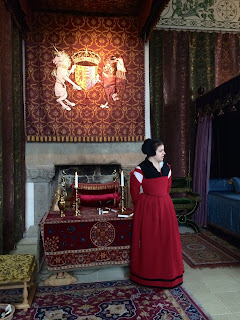"Miss Streisel, can I share today?" For me, every day starts with at least three small voices asking that same question, and my answer is typically, "Of course, about what?" But when the response on November 16th was, "I want to share about Paris," I momentarily froze.
While it was weighing heavy on my mind, I didn't expect to be confronted with the idea of discussing terrorism with my 8-9 year old students so early in the morning the Monday after the attacks in Paris. I was still confused myself (and still am), so being the authority on how to address this with children was intimidating. I wasn't sure who knew what, or how to comfort them when it is clearly a terrifying and awful subject. However, they knew about it so our 20 minute Morning Meeting routine was focused on world events.
I'm not sure if this would be fitting in every classroom, but in mine it was.
We began with just the question, "Raise your hand if you know what happened in Paris this weekend," and every one of their hands went up. To be honest, I had mixed feelings: relieved that I didn't have to be the one to tell them, saddened that they are aware of the darkness we face in our world at such a young age. The next question was on how they were feeling. Sadness, worry, fear, sympathy, anger... They couldn't understand why someone would want to hurt others so badly. They were worried because their dad's were supposed to travel to Paris for business that weekend, or their Thanksgiving break was meant to be spent there. They were worried that Milan would be next. One of my girls is half French, and she shared that her father's family lives in Paris, and then her eyes filled with tears and she didn't want to share more (we have since talked, and her family is fine).
Finally, the question I worried about most came up: why did the terrorists attack?
I wasn't sure myself, and didn't want to go down that path. One of my Italian girls, the one who had asked to share in the first place, blurted out, "I know! It's because in our religion, we have a lot of freedom, and in theirs they don't, so they are mad at us for being so free." A boy, who had been very quiet (which is VERY strange for him) burst out, "NO! That's not what it is! They have NO religion! They have no religion at all! They wouldn't do this if they had any religion, so they are NOT religious people!!!" He was clearly incredibly passionate and visibly upset. This was from one of my three Muslim students (I have three boys, one from Iran who was completely new to English this year, one from Libya, and one from Saudi Arabia- this one was a sweet, energetic 8-year old Saudi boy). The students all nodded solemnly at his words, agreeing silently that no matter their beliefs, they knew that these people could not be associated with a religion that people we know and love also follow. They were a separate entity.
At a separate point, my boy from Libya nervously asked me if it was the Muslims who did it, clearly worried if his religion was "wrong." The fact that such a sweet boy, who loves soccer, Pokemon, and playing UNO with his best friends from Russia, Japan, Bulgaria, and Italy should even have that concern is heartbreaking.
Since then, my students and the rest of our community have tried to figure out what to do with ourselves.
They want to express what they know, and the pain that they have. They want to reach out but don't really know how to do it. After recess, one of my girls (the one whose family is in Paris) told me that she felt a little better because all of her friends and her (who follow different religions) had spent recess praying in a circle for peace. At certain points throughout the day, students have "Quiet Time" or "Daily 5" time, and they have choices during those periods on what activities that want to do- our classroom is covered in posters and poems about peace, love, and Paris because that is how they want to spend that time, and my one girl has done her best to teach her classmates to say, "We love you, Paris" in French. They desperately need to do something with their feelings and confusion, and they're doing their best to put it into words, pictures, and actions.
The novel we're reading as a class fits in perfectly, and it's solely because these children are looking for an explanation.
We're reading the "Tale of Despereaux," the story of a little mouse who loves music, reading, and a princess, which are very un-mouse things to love, a rat who wants to find light, though rats are meant only for darkness, and a girl who has never once been asked in her entire life what she wants, but dreams of becoming a princess. As a class we have latched onto the idea of light vs. dark; when the world touches us with darkness, we must reach out with light. We've also been very moved by the downfall of Chiaroscuro (the rat), who has no idea that rats aren't meant for the light or that rats are awful creatures, until he hears the tone of the princess's voice when she calls him a rat and begins to see himself as a terrible thing. Any explanation, any rationalization we can find for actions that have no rationale is comforting, as it gives them something to understand when it is completely un-understandable.
The students at my school are so lucky that they are constantly faced with those who are different from them.
I was slightly annoyed earlier this year when I recieved my class list, because I have a heavily Italian group of students- 11 out of 18. But that's a very privileged annoyance, and speaks to who our school is- a big draw of our school is that it's a very international community. But even with 11 out of 18 being from the same country, these kids are friends with people from all over the world. Their best friends speak another language at home than they do, eat food that's totally different, have traditions that are unlike their own. Last year, the 'cool' thing for my Italian boys was to eat kimchi, a Korean dish that they'd tried at one of their friends houses, and that they'd beg their moms or nannies to make. My boy from Iran has become very popular in class because though he knows only a teeny bit of English now, the kids have realized that he is hilarious and sweet, and they love him and work to communicate despite the language barrier. Being different is the norm, and is valued. If you can grow up not only tolerating differences, but with a curiosity and appreciation for them, a desire to know about them, I can only imagine what this looks like in adulthood and when moving forward in changing the world.
Anyways, I'm going to end with a note I found on one of my girl's desks the other day. Try and read all of those tiny bits, because it's a letter to the Earth and is beyond beautiful.







































